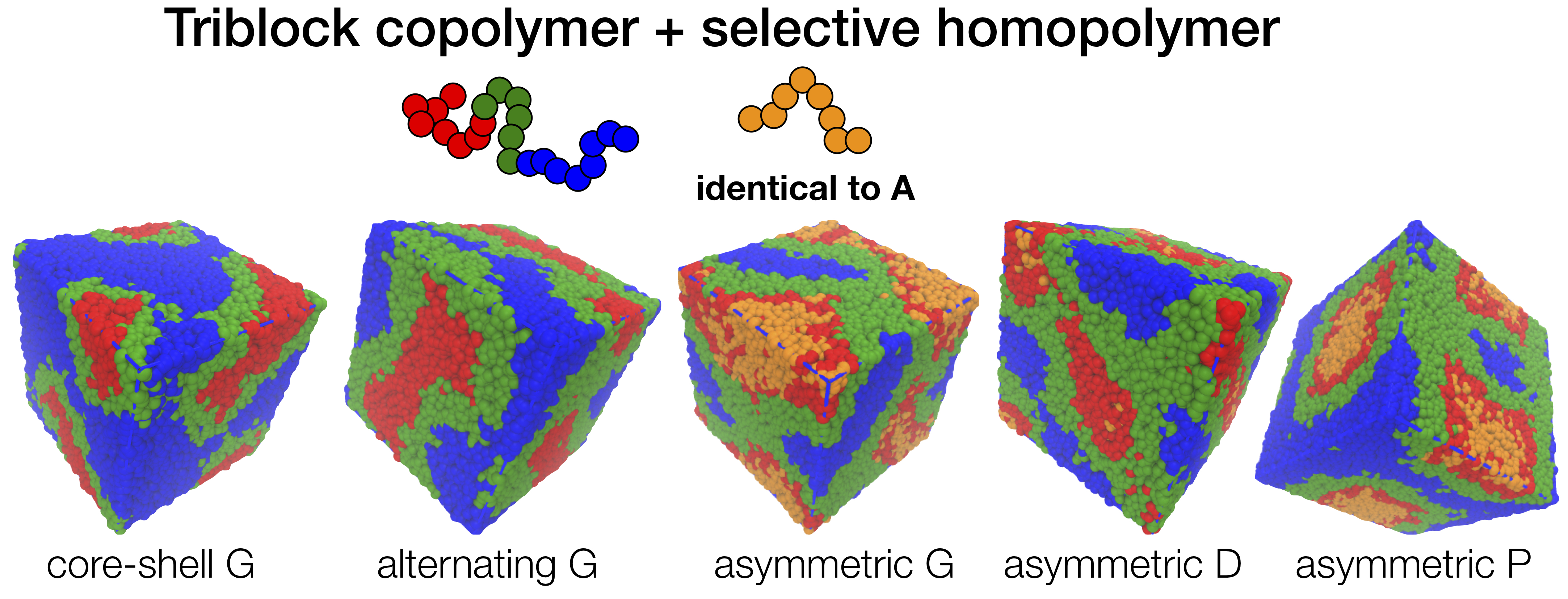(120g) Stability of the Alternating Gyroid Morphology Formed By a Triblock Copolymer Increases By Adding Homopolymer
AIChE Annual Meeting
2020
2020 Virtual AIChE Annual Meeting
Engineering Sciences and Fundamentals
Computational Studies of Self-Assembly
Monday, November 16, 2020 - 9:15am to 9:30am
Triblock copolymers can self-assemble into the alternating gyroid network which is of interest for various application due to its novel optical properties, high surface area, and structural chirality. However, the morphology is only stable in a narrow volume fraction region in the phase diagram for a non-frustrated triblock copolymer (characterized by repulsive end-blocks), as shown in the literature by theory and experiment. We hypothesized that the addition of selective homopolymers will expand and fill the network and adding conformational entropy, thereby increasing the region of stability. Using coarse-grained molecular simulation, homopolymers of three different lengths were tested across a volume fraction range. The lengths were chosen to sample the dry brush and wet brush regimes. With the addition of homopolymer, alternating gyroids were found throughout this extended region of the phase diagram. By analyzing end-to-end distances against the block’s distance from the interface, it was found that the homopolymers fill the middle of the network while maintaining average bulk conformations, confirming our hypothesis.


